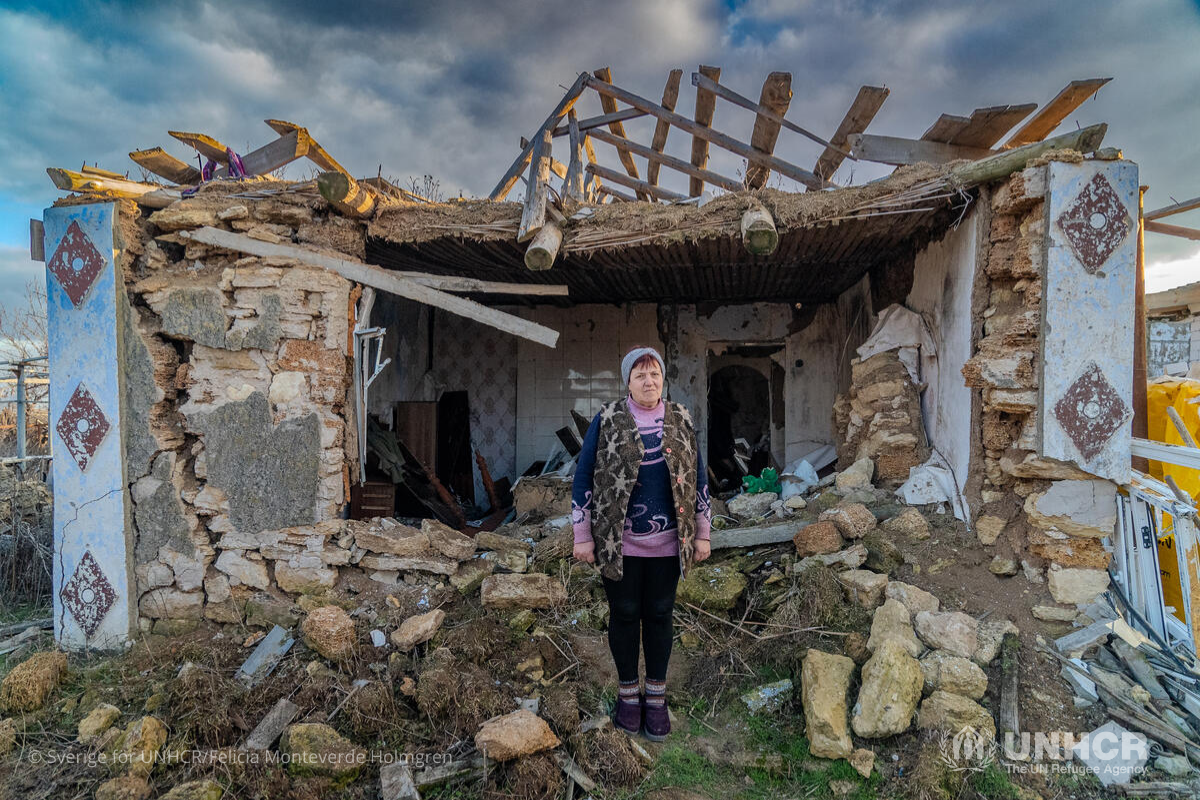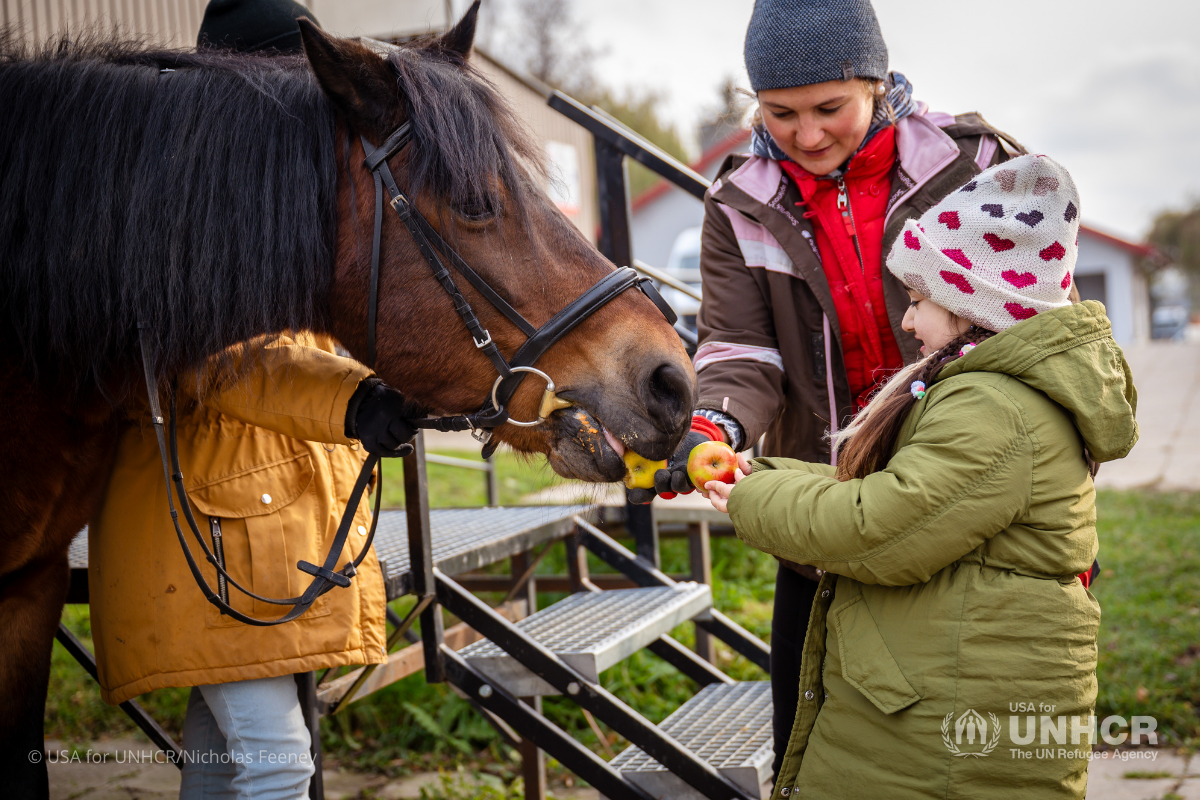Forced displacement worldwide at its highest in decades
War, violence and persecution have uprooted more men, women and children around the world than at any time in the seven-decade history of UNHCR according to a report published today.
The UN Refugee Agency’s annual Global Trends study found that 65.6 million people were forcibly displaced worldwide at the end of 2016 – a total bigger than the population of the United Kingdom and about 300,000 more than last year.
It noted that the pace at which people are becoming displaced remains very high. On average, 20 people were driven from their homes every minute last year, or one every three seconds – less than the time it takes to read this sentence.
“By any measure this is an unacceptable number.”
-UN High Commissioner for Refugees Filippo Grandi
“It speaks louder than ever to the need for solidarity and common purpose in preventing and resolving crises, and ensuring together that the world’s refugees, internally displaced and asylum-seekers are properly protected and cared for while solutions are pursued.”
In each of the past five years, annual increases to the global displacement total have been in the millions. While the 2016 total is high – representing an enormous number of people needing protection worldwide – it also shows that growth in displacement slowed last year.
The total figure includes 40.3 million people uprooted within the borders of their own countries, about 500,000 fewer than in 2015. Meanwhile, the total number seeking asylum globally was 2.8 million, about 400,000 fewer than in the previous year.
However, the total seeking safety across international borders as refugees topped 22.5 million, the highest number seen since UNHCR was founded in 1950 in the aftermath of the Second World War.
“My husband was killed in the war … which made me decide to leave my home, everything, behind.”
The conflict in Syria, now in its seventh year, was the world’s biggest producer of refugees (5.5 million). However in 2016 the biggest new factor was South Sudan, where the disastrous break-off of peace efforts in July of that year contributed to an outflow of 737,400 people by the end of the year. That number has continued to rise during the first half of 2017.
“My husband was killed in the war which, in addition to the shortage of food, made me decide to leave my home, everything, behind,” she told UNHCR staff during an interview at a temporary way station in Ethiopia.
In terms of overall displacement, Syria still accounts for the biggest numbers, with 12 million people (65 per cent of the population) displaced internally or living outside the country as refugees.
Leaving aside the long-standing Palestinian refugee situation, Colombians (7.7 million) and Afghans (4.7 million) remained the second- and third-largest displaced populations, followed by Iraqis (4.2 million). In total, about 3.3 million South Sudanese had fled their homes by the end of the year, in what has become the fastest-growing displacement of people in the world.
Particularly heartbreaking is the plight of children, who make up half the world’s refugees, and continue to bear a disproportionate burden of the suffering, mainly because of their heightened vulnerability.
Tragically, 75,000 asylum claims were received from children travelling alone or separated from their parents, among them youngsters like Tareq, 16, who dodged armed combatants to walk out of Syria into neighbouring Turkey.
“There was no future where we lived,” he told UNHCR. “There was no university and no work. There were troops grabbing young children like me, and they send them to war, and they get killed. I wanted to study.”
Last year, much of the news coverage focused on refugee resettlement to developed countries, including efforts by some states to restrict access and even erect border barriers.
However, figures in the report showed that, worldwide, most refugees – 84 per cent – were in developing or middle-income countries at the end of 2016, with one in every three (4.9 million people) being hosted by the world’s least developed countries.
“There were troops grabbing young children like me … I wanted to study.”
This huge imbalance reflects several things including the lack of consensus internationally when it comes to hosting refugees, and the proximity of many poor countries to regions of conflict.
It also illustrates the need for countries and communities supporting refugees and other displaced people to be properly resourced and supported, the absence of which can cause instability, have consequences for life-saving humanitarian work or lead to secondary displacement.
UNHCR estimates that at least 10 million people were without a nationality or at risk of statelessness at the end of 2016. However, data recorded by governments and communicated to UNHCR were limited to 3.2 million stateless people in 75 countries.
Faced with another year of a record displacement, devastating the lives of millions of men, women and children, one thing is clear: “We have to do better for these people,” Grandi said. “For a world in conflict, what is needed is determination and courage, not fear.”
By: Adrian Edwards in Geneva
(Additional reporting by Diana Diaz in Ethiopia)


